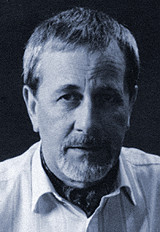| Hafsteinn Austmann |
 |

Hafsteinn Austmann's first independent exhibition in Iceland was at the Listamannaskálinn (The Artists' Gallery) in 1956. On display were 70 paintings in all, oils, water colours, gouaches as well as some wooden sculptures. The exhibition aroused a good deal of interest and was favourably received, or as one of the critics wrote: "Hafsteinn Austmann is a young painter, now stepping into the limelight, who deserves attention. His earlier paintings are not very revealing, but his more recent works establish him beyond all doubt as a very promising artist. His greatest originality lies in his handling of colour and in this he resembles many of our most noteworthy artists."
During this period, Austmann painted both in oils and water colours, devoting himself exclusively to the latter after a second independent exhibition at the Listamannaskálinn in 1958. The fruits of those labours went on exhibition in 1960 at the Bogasalur gallery in the National Museum, testifying to his artistic development and departure from the earlier dark and weighty geometrical forms for a lighter and more poetic abstract expression. The 1960 exhibition, unique on the Icelandic art scene in that it consisted solely of water colours, was a huge success. The paintings were diverse, yet blended into a composite whole.
In 1956 Austmann went abroad for an extended study tour in Europe, spending some months in Rome and visiting Paris, London, Amsterdam, Stockholm and Copenhagen. The impressions received in the course of these journeys were very much in evidence in the paintings he exhibited in Iceland in the autumn of 1966, where he showed an inclination towards more romantic and less rigid forms. A fruitful period of work in a new studio in Reykjavik brought experiments with new materials, although the artist's subject matter remained the same. In 1968-69 Austmann lived in Arhus, Denmark, where he took part in the exhibitions of the "Guirlanden" group during the course of a very productive year. His next exhibition in Iceland was at the Reykjavik Municipal Museum of Kjarvalsstadir in the spring of 1971. His work had by now acquired more force and daring, his touch had become lighter and his style more distinctive, with characteristic black forms and lines constituting a personal imprint.
During the last decades, Hafsteinn Austmann has been executing works in both water colours, acrylic paint and oils. He has always remained loyal to the concept of abstract art, constantly evolving within it. He is a direct and forceful artist, whose hallmark is his handling of colour. He works slowly to extract the maximum from his subject and his technique is superior to that of most of his fellow abstract painters. Faithful to his calling and true to himself, Hafsteinn Austmann is an artist in steady progress.
Thorsteinn Jónsson
|
|
|
|
|
|
|
|